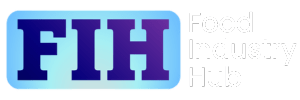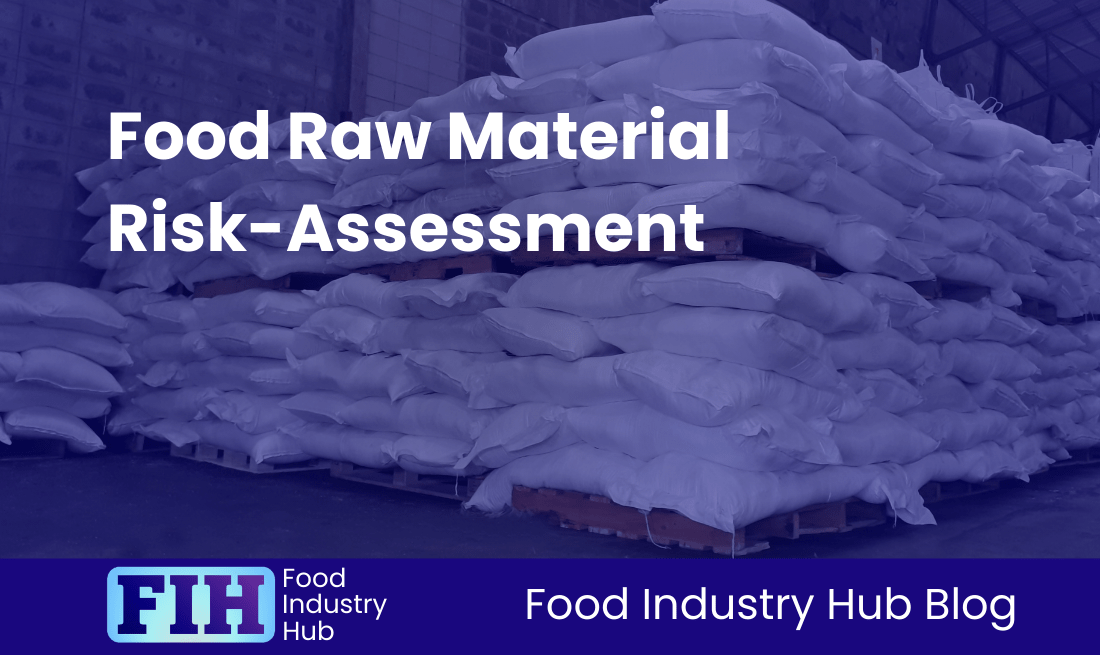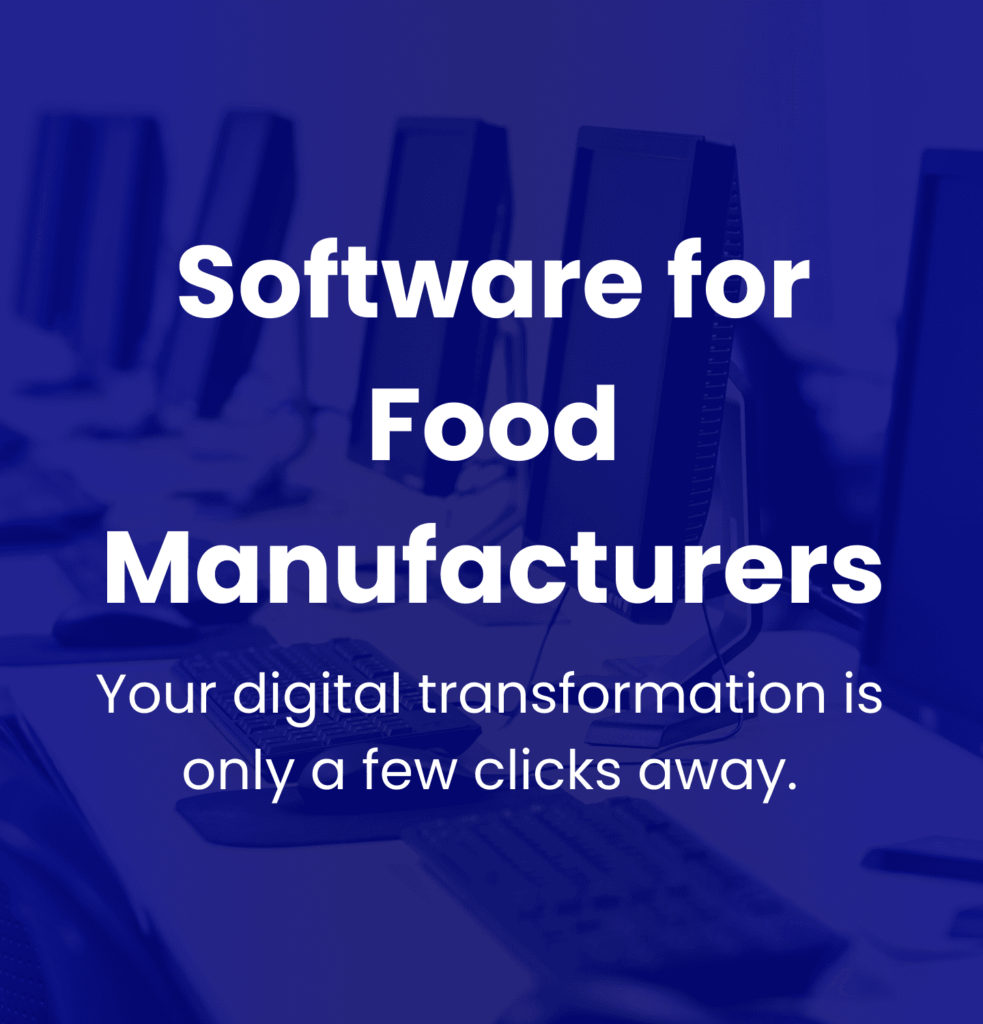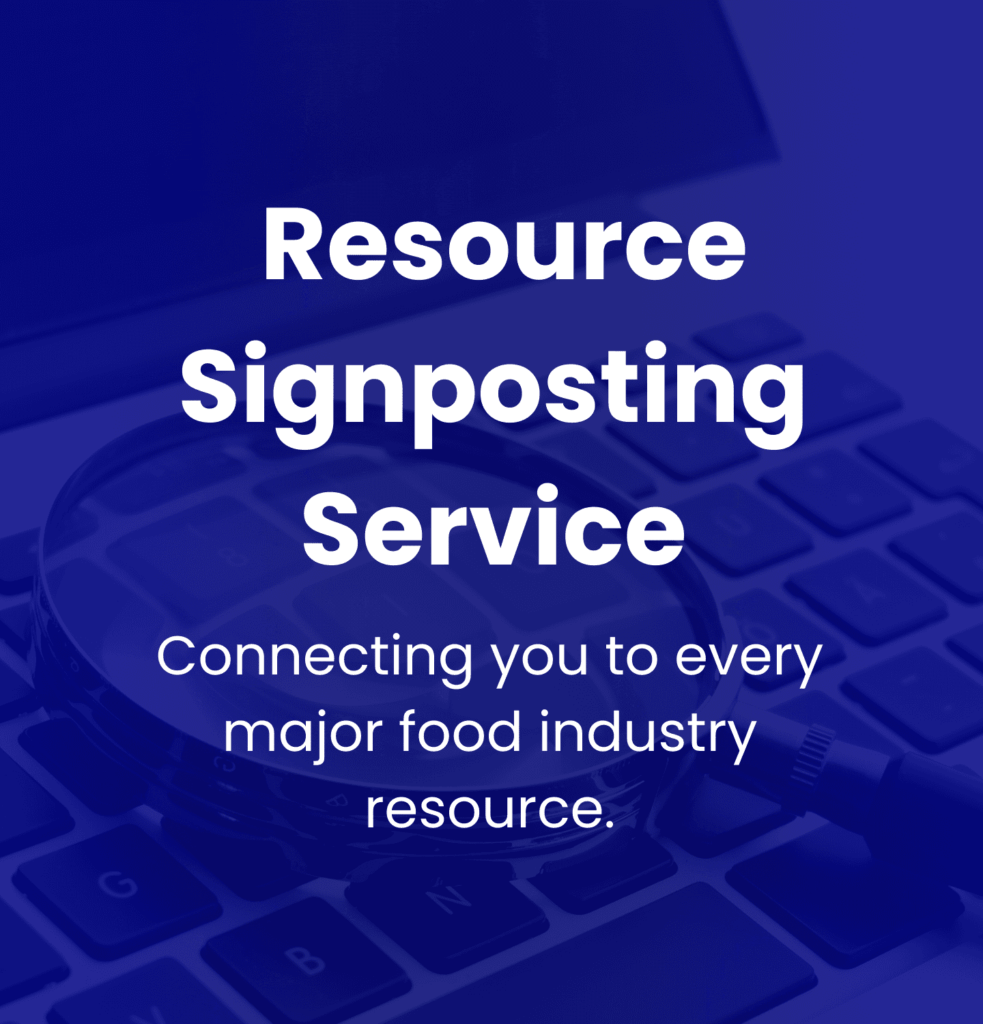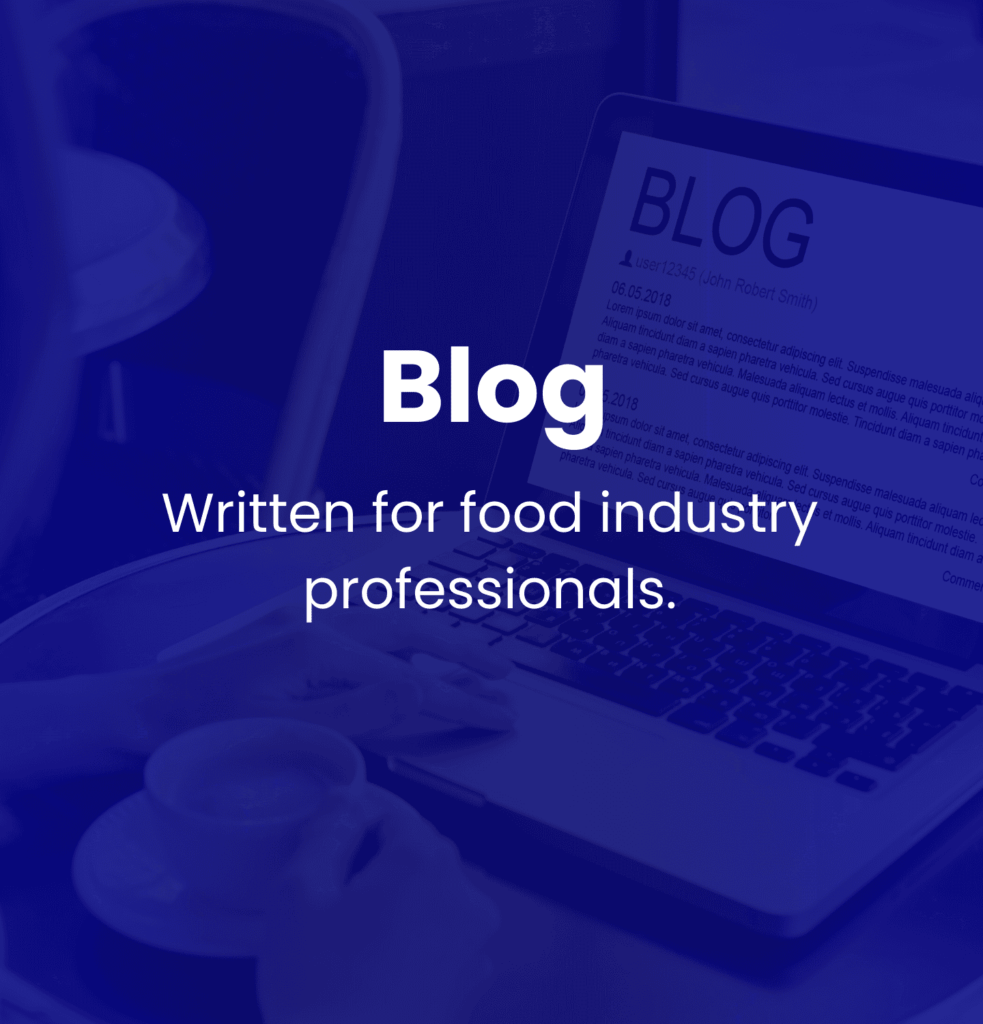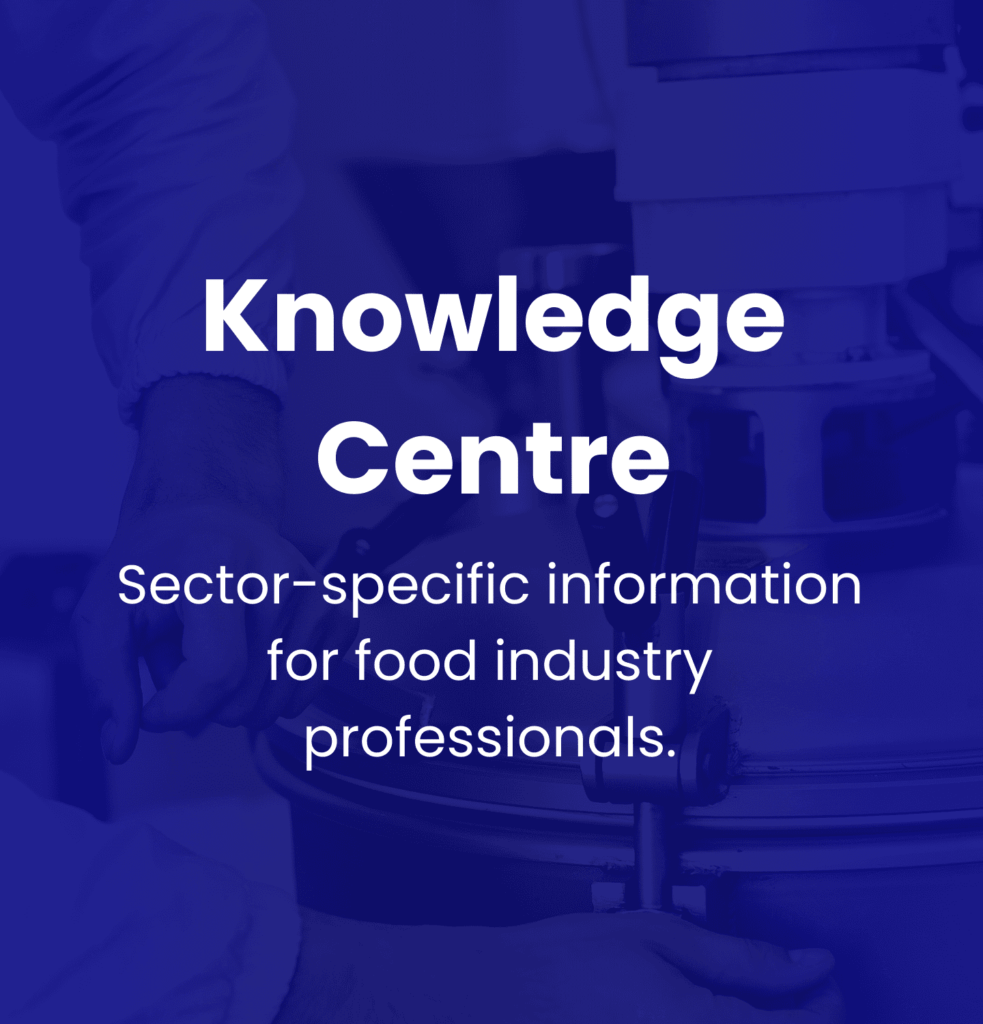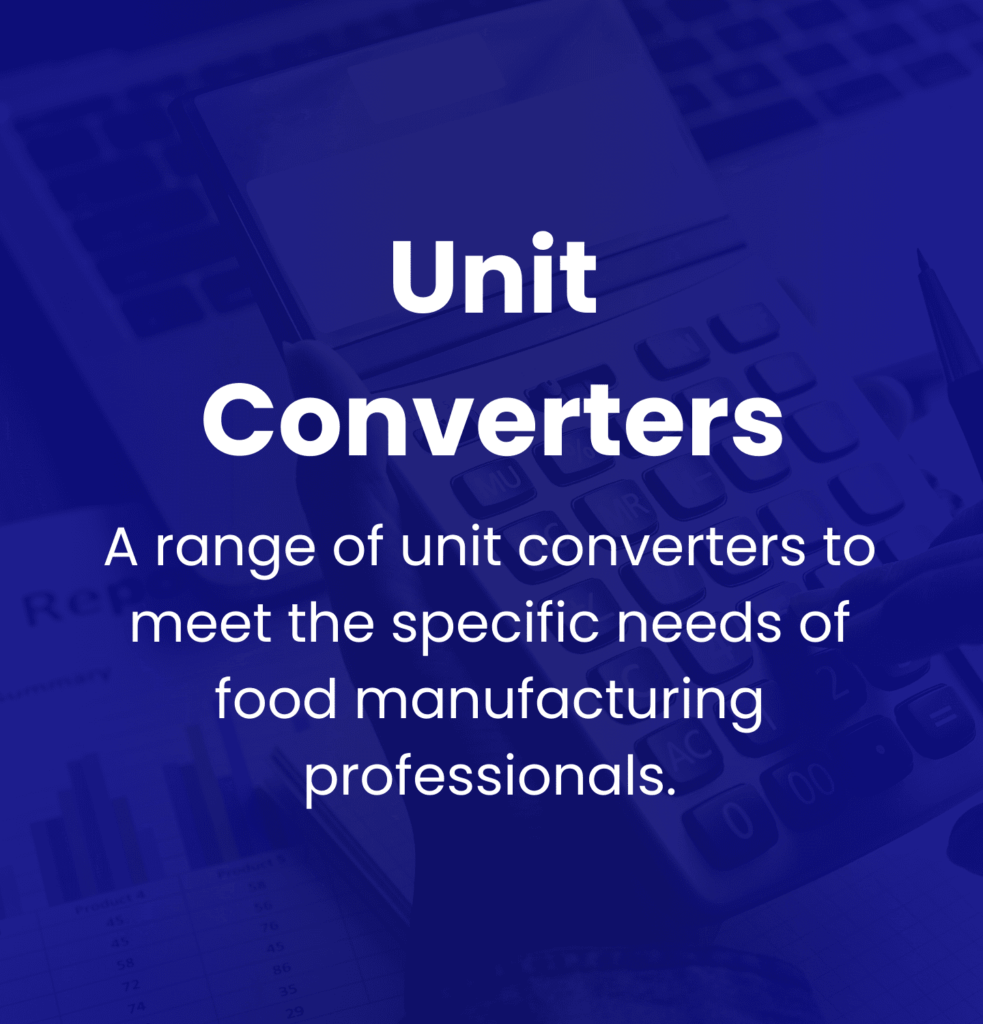Know: Allergen Risk Assessment
Introduction
Significant increases in food allergy prevalence worldwide are posing substantial health risks, impacting millions of people. This escalation underscores the need for efficient food safety measures. In this context, allergen risk assessments have become a tool equipping us to protect consumers effectively. These assessments allow food manufacturers to systematically identify and mitigate potential allergen hazards, thereby ensuring consumer safety and navigating the evolving regulations.
Allergen Risk Assessment Defined
Allergen Risk Assessment (ARA) is a methodical process in food production aimed at identifying and evaluating allergen-related risks. This exhaustive evaluation includes assessing raw materials, scrutinising possible cross-contact hazards during production, and confirming precise allergen labelling. ARA is integral to prevent allergic reactions while meeting comprehensive legal requirements such as those established by the EU’s Food Information for Consumers (FIC) Regulation and those imposed by the U.S. FDA.
The Importance of Allergen Risk Assessment
Allergen risk assessments play a substantial role in food safety, helping to minimise the risk of allergen contamination and, in turn, protect consumers. Efficient risk assessments also contribute to the overall quality of products by ensuring the correct management of allergenic ingredients. Beyond this, ARA assists in meeting legal obligations, ensuring that manufacturers consistently comply with relevant legislation. Notably, by developing a transparent allergen communication mechanism based on robust assessments, manufacturers can establish trust with consumers, thereby boosting confidence in the safety and integrity of food products.
In this article, we will delve into vital areas related to allergen risk assessments. These include regulatory frameworks guiding allergen management practices, methodologies for conducting risk assessments, strategies to prevent cross-contamination, effective supplier management, and clear allergen communication. We will also look at the role of technology in allergen management and comment on emerging global trends influencing industry practices. Our aim is to provide our readers with a complete understanding of the role allergen risk assessments play in the food manufacturing sector, in terms of safety, quality, legal compliance and product authenticity.
Key Takeaways
Effective allergen management is becoming increasingly important. As the occurrence of food allergies continues to grow, it’s essential to adopt a proactive stance towards allergen risk assessments, with the aim of safeguarding consumers and upholding food safety. This section provides significant insights that will aid in managing allergen risks effectively within food manufacturing.
Understanding Regulatory Frameworks
Regulatory frameworks guide allergen management practices by setting necessary standards for labelling, risk assessment and overall food safety. In regions such as the EU and Australia, specific legislations like the Food Information for Consumers (FIC) Regulation enforce exacting and clear allergen labelling. These systems have been developed to safeguard consumers and build trust in food products. The continual evolution of such regulations, best seen in the FAO/WHO’s creation of a risk-based strategy for allergen labelling, supports improvements in compliance and consumer safety.
Impact of Risk Assessment Methodologies
Structured risk assessment methods greatly contribute to food manufacturing safety by identifying and reducing potential allergen risks along the supply chain. This involves forming multi-disciplinary teams to oversee the presence of allergens at every stage, from ingredient procurement to final product distribution. An exhaustive and systematic approach ensures manufacturers can foresee potential allergen exposure and execute effective control measures to tackle these risks.
Prevention of Cross-contamination
One of the key objectives in allergen management is the prevention of cross-contamination. The implementation of detailed cleaning protocols, separation measures, and allergen mapping to trace potential contamination points within the production process are all effective strategies. Regular verification of these measures through testing and audits maintains a contaminant-free environment and upholds consumer safety.
The Role of Supplier Management
Managing suppliers effectively is another vital component in allergen risk management. Conducting regular audits to ensure suppliers comply with allergen management standards, and maintaining clear lines of communication, can significantly decrease the risk of unintentional allergen presence. Comprehensive documentation of supplier practices supports traceability and enhances risk control throughout the supply chain.
The Advantages of Technology
Utilising technology brings increased efficiency to allergen management. Advanced identification methods, such as mass spectrometry, and software solutions for data management, enhance the capability to recognise and manage allergens more accurately. This advancement in technology simplifies compliance tracking and supports effective risk assessment processes.
Global Alignment and Emerging Trends
Aligning internationally with current trends in allergen management emphasises the need for best practices. Embracing global standards can help standardise allergen management processes across regions, enhancing trade and consumer confidence. As more consumers lean towards allergen-free options, it is becoming increasingly important for businesses to align local practices with global trends in order to succeed in a competitive market.
Engagement with these key points not just aids in regulatory compliance but also contributes greatly to the construction of a robust allergen management framework that prioritises consumer safety and product integrity.
Food Industry Hub Management Systems can significantly boost the effectiveness of your food safety and quality management system, leading to improved confidence and elevated quality assurance throughout your operations.
Regulatory Frameworks and Compliance
In this section, we explore several key regulations pertaining to allergen risk assessment as well as the paramount importance of compliance to these guidelines:
Introduction to Key Regulations
- Natasha’s Law (UK): Introduced in October 2021, this regulation necessitates all food businesses in the UK to disclose full ingredient lists on pre-packaged foods for direct sale (PPDS), while drawing attention to the 14 significant allergens. The objective is to bolster consumer safety for those with allergies through transparent food labelling, particularly for products like sandwiches and salads that are prepared and sold on the premises [Source: Anaphylaxis UK].
- EU Food Information for Consumers (FIC) Regulation: This rule mandates detailed labelling of food ingredients and allergens across the European Union. Despite the UK’s departure from the EU, similar principles are upheld in its legislation, continuing to safeguard consumer rights regarding allergen information.
- FDA Food Allergen Labeling (USA): The Food Allergen Labeling and Consumer Protection Act dictates that the eight primary allergens, including milk, eggs, tree nuts, and peanuts, are to be clearly disclosed on food packaging in order to protect consumers by offering essential allergen information.
- Codex Alimentarius Standards: This global food standard affords comprehensive guidelines for food safety and allergen management. It is adopted worldwide to maintain consistency in food regulations, thus contributing to safer global food systems.
Precautionary Allergen Labeling (PAL)
Precautionary Allergen Labeling represents extra warnings listed on food packaging, such as ‘may contain’ statements, indicating potential allergen contact due to shared production equipment. Although PAL is not required under specific laws like Natasha’s Law, it serves a critical role in allergen management by influencing consumer risk perception and offering necessary information to limit exposure. Effective usage of PAL can magnify consumer safety but should be carefully managed to avoid unnecessary alarm or label fatigue among consumers.
Necessity of Compliance
The adherence to these regulatory frameworks is central to operating food businesses. Non-compliance could lead to severe legal consequences, including fines, product recalls, and potentially civil lawsuits for negligence. Reputational damage ensuing from compliance failures could erode consumer trust leading to long-lasting financial repercussions. Compliance acts to not only safeguard the consumer but also strengthens the brand’s position in the marketplace by demonstrating a commitment to food safety.
Key Terminology in Regulatory Frameworks
PAL (Precautionary Allergen Labeling)
PAL functions as a mechanism to alert consumers about potential allergen risks unidentified during ingredient testing. It increases transparency by informing consumers about possible allergen exposure, which is a matter of great concern for those with allergies. This labeling practice safeguards consumers and assists companies in preventing liability in cases of allergic reactions.
UAP (Unintended Allergen Presence)
Unintended Allergen Presence signifies the accidental inclusion of allergens in food products, typically due to cross-contamination during processing. This concept is significant in risk assessments because understanding UAP aids in the effective use of precautionary labels and improving product safety.
Risk Assessment Methodology
Quantitative Risk Assessment (QRA) provides a structured methodology that recognises, examines, and quantifies potential hazards in food products, particularly towards allergen contamination. By incorporating quantitative data, QRA provides both food manufacturers and stakeholders with clear insights for effective risk management decisions. An important aspect of allergen risk assessment is the recognition of two core components: Hazard Identification and Severity vs. Likelihood Matrix.
Introduction to Quantitative Risk Assessment (QRA)
Hazard Identification is the initial step in QRA that helps identify potential allergens such as nuts, gluten, and shellfish in food products. This process assists in understanding areas that may pose risks during food manufacturing.
The Severity vs. Likelihood Matrix is an essential tool in quantifying these risks. It classifies identified risks based on their potential severity and the probability of occurrence. For example, the severity measures the health impact of an allergic reaction, while the likelihood determines the chance of a consumer encountering certain allergens, such as peanuts.
FAO/WHO’s Three Criteria Overview
Consistently adopted for structuring risk assessments, the three primary criteria proposed by the Food and Agriculture Organisation (FAO) and World Health Organisation (WHO) help keep allergenic risk evaluations comprehensive and focused on aspects crucial to consumer health:
- Hazard Identification determines specific allergenic substances found within the food.
- Hazard Characterisation delves into the potential health effects of these allergens, thereby informing on the severity of these effects.
- Risk Characterisation combines the likelihood and severity analysis to evaluate potential exposure levels and associated health implications.
Defining Threshold Levels
Threshold levels provide valuable insights in terms of quantifying allergen risks, thereby facilitating strategic risk management. Their function is to establish when a risk is significant enough to require intervention – categorising risks as low, moderate, or high. This helps specify acceptable limits for allergen presence in products, thereby ensuring compliance with safety standards and protecting consumer health.
Key Risk Assessment Terminologies
Cross-Contact Points
Cross-contact points are areas within the food processing environment that may inadvertently allow allergenic substances to mix with non-allergenic products, increasing the risk of allergen contamination. Identifying these cross-contact points and subsequently implementing appropriate mitigation strategies can minimise risks effectively.
JECRA (Joint Expert Consultations on Risk Assessment)
Joint Expert Consultations on Risk Assessment (JECRA) have an important role in formulating guidelines for assessment methodologies related to food safety, including allergen management. JECRA achieves this by collaborating with experts from various disciplines, thereby ensuring that allergen control measures adhere to consistent and scientifically supported standards.
Hazard Rating
The process of hazard rating is utilised to assess the potential risk associated with allergenic substances in food products. A higher hazard rating would indicate a higher risk, thereby necessitating effective control measures, such as enhanced sanitation protocols, dedicated processing lines, and clear product labeling. This iterative approach significantly influences overall allergen risk management.
Sign-up for the Food Industry Hub Mail Service
We regularly produce new content for food industry professionals, and the Food Industry Hub Mail Service is the best way to stay up to date with the latest additions.
Signup today to be added to the Food Industry Hub mailing list.
Preventing Cross-Contamination
Segregation Protocols
Segregation protocols are key to maintaining food safety, especially concerning allergenic ingredients. The success of these protocols lies in the physical separation of allergenic ingredients from those that do not contain allergens. This spans the supply chain, where it includes receiving, storage, handling, and processing stages. Designated storage spaces for allergenic ingredients can lower their contact with products that are allergen-free. Colour-coding systems can help visually differentiate between allergenic and non-allergenic materials, helping to further reduce the likelihood of any mix-ups. Also, the use of dedicated tools like pallets and bins, specifically for allergenic ingredients, can curb the chances of cross-contact. This is particularly important in facilities which handle different types of food products. [Source: Food Allergy Research and Resource Program]
Sanitation Validation
Maintaining effective cleaning and sanitation measures is significant in preventing cross-contamination. Regular cleaning and disinfection of surfaces, equipment, and utensils ought to be carried out to obliterate potential allergens and contaminants. ATP (adenosine triphosphate) testing plays an instrumental role in this validation process. This testing measures the residual organic matter on surfaces to guarantee cleanliness. Low ATP readings are indicators of thorough sanitation, hence reducing the risk of allergen transmission. Detailed records of cleaning activities, methodologies, and validation processes should also be kept to stay compliant and show due diligence in allergen management. Routine audits and staff training on sanitation protocols underscore these efforts and ensure that sanitation practices stand the test of time.
Airflow Management
Food production facilities’ airflow dynamics can inadvertently contribute to allergen transfer. Appropriate airflow management is needed to combat this risk. The implementation of air filtration systems can notably cut down airborne allergens and contaminants. Simultaneously, ensuring that ventilation controls correctly steer airflow can prevent allergens’ diffusion between different production areas. Preserving the integrity of airflow systems aids in confining allergens within specific zones and minimises cross-contact risks, primarily in facilities where both allergenic and non-allergenic products are engineered.
Allergen Scheduling
The implementation of allergen scheduling practices helps to decrease the likelihood of cross-contact during the production process. Planning long production times for allergenic products can minimise the frequency of changeovers that introduce contamination risks. When feasible, manufacturing non-allergenic products before those containing allergens is an effective way to reduce cross-contact. Also, controlling the timing of when allergenic ingredients are added during production – ideally as late as possible – can further limit allergen exposure to non-allergenic ingredients. [Source: Food Allergy Institute]
Defining Terminology: Cross-Contamination Prevention
ATP Testing
Adenosine triphosphate (ATP) testing is a method used to measure the presence of ATP, a molecule found in all living cells, on surfaces after cleaning. It serves as a practical tool to verify cleanliness and ensure surfaces are free from residual dirt (including allergens and microbial contaminants). A lower level of ATP is an indication of effective sanitation, thus reducing the potential for allergen cross-contamination in food production environments.
Closed Production Systems
Closed production systems offer a strategic way to prevent cross-contamination by minimising food products’ exposure to the external environment. These systems usually use sealed equipment to keep out airborne allergens and reduce human contact. By controlling the operational environment, closed systems enhance the ability to maintain cleanliness, significantly reducing allergen transfer risks, and offering a strong measure of allergen management in food manufacturing. [Source: National Institutes of Health]
Managing Suppliers and Allergen Communication
In the food manufacturing industry, effectively managing allergen risks involves several integral components, notably supplier audits and dependable allergen communication. Taking a comprehensive approach allows the enhancement of the supply chain’s safety and reliability.
Supplier Audits and Benefits
Supplier audits act as a key tool in the overarching allergen risk management strategy. These evaluations ensure compliance with allergen management protocols, and promote clear practices essential for consumer safety. They serve multiple functions that result in a more secure supply chain.
At the core, audits verify that suppliers uphold comprehensive allergen control plans. This verification process lessens the likelihood of unmentioned allergens infiltrating products, thus safeguarding consumers who might be at risk. Additionally, audits act as a useful instrument in risk assessments — identifying potential shortcomings in suppliers’ allergen procedures and allowing companies to enact preventive measures before problems occur. Effective audits bolster operational efficiency by making definite supplier roles in allergen management and encouraging transparency that needs to be universally understood across the supply chain.
Blockchain Traceability
An innovative addition in the fight for increased supply chain transparency is blockchain technology. As a decentralized system, blockchain documents every transaction, resulting in an unalterable ledger that reliably tracks ingredient movements from their original source to the end consumer.
Blockchain’s unalterable nature helps affirm product authenticity, an important factor in preventing fraudulent activity within the supply chain. With swift access to detailed ingredient histories, potential allergen-related problems can be identified and rectified promptly, thereby supporting consumer safety and regulatory compliance.
Global Allergen Alignment
For multinational manufacturers, aligning allergen management practices across relevant borders is a necessity. Given the variations in allergen labelling and safety laws, establishing globally consistent practices can mitigate risks related to allergen mismanagement and significantly enhance compliance.
Varied regulations such as Natasha’s Law in the UK and the Food Allergen Labeling and Consumer Protection Act (FALCPA) in the United States, necessitate that manufacturers standardise their allergen management approaches. By adopting a worldwide framework, companies can bolster consumer safety on an international scale, reducing potential allergic reactions among consumers, and subsequently, boosting trust in their brand.
Defining Terminology: Supplier Management
ILSI Europe Guidance
In terms of managing food allergens, the International Life Sciences Institute (ILSI) Europe provides key guidance that manufacturers should adhere to. These guidelines encapsulate best practices that are based in science and promote a uniform approach to allergen handling across the industry. Following ILSI guidance allows businesses to align with standards and publications while also mitigating allergen risks, empowering them to maintain consumer safety proficiently. [Source: ILSI]
GS1 Data Pools
GS1 Data Pools are pivotal in improving allergen data sharing between suppliers and manufacturers. These standardised platforms promote efficient exchanges of product information, encompassing key allergen details.
By leveraging GS1 Data Pools, companies can assure that allergen information remains consistent and current for all pertinent stakeholders in the supply chain. This synchronisation improves safety through enhanced traceability, while also improving overall operational efficiency, enabling quick and accurate allergen status updates when required.
Technological Integration
Allergen detection kits hold a paramount role in food manufacturing, safeguarding products against allergens. Let’s delve into the common types:
Allergen Detection Kits
- ELISA (Enzyme-Linked Immunosorbent Assay) Kits: These kits are extensively utilised for detecting specific allergens like peanuts, milk, and soy. These kits offer quantitative results and find great use in processed foods wherein proteins may have been denatured.
- Lateral Flow Devices (LFDs): Providing quick qualitative results, LFDs are especially useful for on-site testing of surfaces and products. Their simplicity and rapid output makes them a favoured choice in production environments.
- Protein Swabs: Though not allergen-specific, these simple tools detect general protein residues on surfaces, offering a cost-effective method of ensuring cleanliness in food facilities.
Allergen detection kits are instrumental in validating cleaning processes, ensuring compliance with labelling regulations, and managing allergen risks throughout the production chain.
Digital Allergen Maps
Digital allergen maps can hypothetically illustrate allergen presence across various products. By organising data on allergen detection results visually, they assist in tracking allergen presence and managing complex production environments. This form of mapping could aid risk assessments by offering a clear visual depiction of allergen risks.
Blockchain for Transparency
Blockchain technology can bring several benefits for allergen management:
- Tracking and Verification: Each step of food production can be logged on the blockchain, from sourcing right up to the final product. This ability enables traceability of ingredient origins, validation of allergen testing, and assurance of proper allergen declaration.[Source: Allergen Bureau]
- Transparency and Trust: A transparent supply chain instils confidence in consumers about the accuracy of allergen information. This transparency can significantly mitigate the risk of allergic reactions brought on by mislabelled products.
- Efficient Recall Management: In the event of an allergen issue, blockchain technology can swiftly pinpoint the affected products, making targeted recalls feasible.
In essence, technological integration in allergen risk assessment embraces advanced detection kits, the concept of digital allergen maps, digital tools for enhanced transparency, and sophisticated analytical techniques like mass spectrometry. Together, these technologies bolster the safety and compliance of global food products.
Emerging Trends and Global Alignment
Free-From Product Growth: Trend and Implications on Allergen Risk Assessment Strategies
The increasing demand for “free-from” products—those generated without specific allergens such as gluten, nuts, or dairy—signals a considerable shift in consumer preferences towards safer food options. This trend necessitates rigorous allergen risk assessment strategies to meet consumer safety expectations and regulatory obligations. Manufacturers are tasked with adopting enhanced measures to absolutely ensure the absence of allergens in products labeled as “free-from.” This involves careful control of raw materials, the use of dedicated processing lines, and thorough cleaning protocols to prevent cross-contamination during production. Regular analytical testing is necessary to verify the non-existence of allergens and sustain consumer trust. As this market segment expands, manufacturers may need to refine their labeling practices and set allergen threshold levels that truly reflect the safety profiles of these products, supporting international trade compliance.
Global Threshold Harmonisation: Importance for International Trade
Maintaining consistent allergen thresholds worldwide is beneficial for promoting international trade. Harmonisation provides manufacturers a framework within which they can operate, minimising ambiguity around safety standards across distinct markets. It doesn’t only simplify compliance efforts but also boosts consumer protection by guaranteeing similar safety measures are applied irrespective of where the products are sold. When thresholds are standardised, it lessens the risk of allergic reactions from inconsistent labeling or safety practices during cross-border movement of food products. This alignment also elevates consumer confidence in imported goods, cognisant that they follow established safety protocols [Source: BRCGS].
Epigenetic Allergy Research: Overview
Recent advances in epigenetic research are starting to reveal how environmental factors can alter genetic predispositions to allergies, potentially shaping our future approach to allergen management. Studies indicate aspects such as diet, pollution, and lifestyle can modify gene expression tied to allergic reactions. As we continue to understand these mechanisms in depth, we may come up with innovative strategies aimed at preventing allergies or managing them more effectively. For instance, by detecting epigenetic markers connected with increased susceptibility to allergens, we could implement targeted interventions prior to the manifestation of allergies. This rapidly evolving field may unlock new avenues for personalised medicine in allergy treatment, enhancing the efficacy of risk assessments and overall allergen management in food production [Source: Allergic Living].
Key Terminology: Trends and Global Alignment
Food Hypersensitivity: Implications for Allergen Risk Assessments
Food hypersensitivity encompasses a variety of adverse reactions to food, which include both immune-mediated allergies and non-immune-mediated intolerances. This broader understanding influences allergen risk assessments as it necessitates distinguishing between severe reactions that may need immediate intervention, such as anaphylaxis, and less severe intolerances that typically involve gastrointestinal distress. These distinctions guide risk assessment strategies and direct the implementation of tailored management practices to effectively protect consumers. This also necessitates comprehensive labeling practices that accurately depict these differences, hence ensuring the safety of sensitive consumers [Source: WHO].
Allergenomics: Implications for Allergen Management
Allergenomics, centred on the genetic constitution of allergens, offers invaluable insights into their behaviours and interactions with human biology. This field holds significant potential for allergen management as it can aid in identifying new allergens and comprehending the mechanisms behind allergic reactions. These learnings can guide the development of more specific diagnostic tools and targeted treatments, hence enhancing the management of food allergies. Allergenomics contributes to refining risk assessments by delivering extensive information on allergenic proteins, aiding the creation of more precise safety thresholds and informed labeling strategies, thereby improving overall consumer safety in food manufacturing [Source: PMC].
Conclusion
In the discourse around allergen risk assessment in food manufacturing, definite themes have become clearly evident, forming the foundation of consumer safety and adherence to regulations.
The Indispensable Role of Allergen Testing
Testing for allergens is exceedingly significant, enabling manufacturers to detect and quantify allergens thereby ensuring regulatory conformity and maintenance of safety guidelines. Reliable detection methods such as Enzyme-Linked Immunosorbent Assay (ELISA) and lateral flow tests are extensively applied. [Source: Neogen].
Mitigating Cross-Contamination
It is of grave importance that cross-contamination between allergenic and non-allergenic foods is prevented to ensure consumer health. This process necessitates the use of specific equipment, rigorous cleaning protocols, and colour-coded systems to minimise accidental allergen exposure.
Supplier Compliance
It’s significantly important for suppliers to comply with meticulous allergen control practices. This involves routine audits and clearly defined contractual agreements between manufacturers and suppliers to ensure adherence to allergen management protocols.
Training and Development
Teaching staff about allergen risks and correct handling methods contributes to a safe environment within food manufacturing facilities. Thorough training programmes enhance team understanding of operational protocols and responses to allergen exposure[Source: PMC].
Regulatory Compliance
Adherence to compliance standards such as the EU’s Food Information for Consumers Regulation is a requisite for precise allergen labelling to avoid legal consequences e.g., product recalls.[Source: PMC].
Technology Integration
The application of technology significantly influences allergen management through the utilisation of detection sensors, monitoring systems, and traceability tools, including blockchain. These advancements boost detection precision and elevate overall supply chain management.
Reiterating the Importance of Allergen Risk Assessment
In the contemporary food manufacturing industry, allergen risk assessment is vital in safeguarding consumers and maintaining regulatory adherence. It provides a structure for the effective execution of allergen management practices.
Safeguarding Consumers
The primary objective of allergen risk assessment is to protect consumers from allergic reactions. It facilitates cross-contamination prevention through appropriate labeling and product safety.
Regulatory Adherence
Compliance with regulatory standards is vital to avoid legal consequences. Non-compliance can result in product recalls, penalties, and damage to a company’s reputation, hence the necessity for effective allergen management practices.
Risk Assessment Methodologies
Allergen risk assessment involves methodologies that assess potential hazards in the production process and prevention measures that enforce thorough cleaning and equipment protocols. These practices ensure that allergenic products are safely managed throughout the production[Source: PMC].
Supplier Management
Managing suppliers effectively is vital to sustain supply chain integrity. Regular audits and clear communication can considerably decrease allergen risks from external sources.
Technology Integration
Integration of technology including the use of advanced detection systems and traceability tools enhances allergen management, allowing manufacturers to track allergens instantly and ensure conformity with set standards.
As regulations continue to evolve, it’s important for manufacturers to stay updated on new standards and technological advancements. This constant vigilance will ensure sustained conformity and competitiveness in the rapidly changing food manufacturing industry.
About The Food Industry Hub Knowledge Centre
The Food Industry Hub knowledge centre delivers informative content on a variety of topics pertinent to the food manufacturing industry.
You can return to all topics by clicking here.
From The Food Industry Hub Signposting Service
Additional resources from The Food Industry Hub Signposting Service.
From The Food Industry Hub Blog
Expanding on this topic with related content from our blog.
